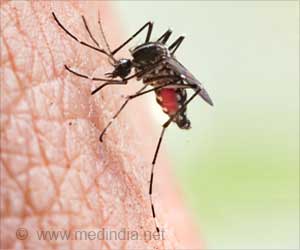Researchers at two American institutes have concluded that warmer sea surface temperatures (SSTs) brought on by climate change have contributed to the doubling of Atlantic hurricanes
Researchers at two American institutes have concluded that warmer sea surface temperatures (SSTs) brought on by climate change have contributed to the doubling of Atlantic hurricanes in the last 100 years.
Greg Holland of the National Centre for Atmospheric Research (NCAR) and Peter Webster of the Georgia Institute of Technology claim in their study that SSTs and altered wind patterns associated with global climate change are responsible for this increase.Holland and Webster's analysis identifies three periods since 1900, separated by sharp transitions, during which the average number of hurricanes and tropical storms increased dramatically and then remained elevated and relatively steady.
The first period, between 1900 and 1930, saw an average of six Atlantic tropical cyclones (or major storms), of which four were hurricanes and two were tropical storms.
From 1930 to 1940, the annual average increased to 10, consisting of five hurricanes and five tropical storms.
In the final study period, from 1995 to 2005, the average reached 15, of which eight were hurricanes and seven were tropical storms. This latter period has not yet stabilized, which means that the average hurricane season may be more active in the future, they added.
Holland and Webster caution, however, that it is not possible at this time to predict the level at which the frequency and intensity of storms will stabilize.
Advertisement
The study appears in the today's online version of Philosophical Transactions of the Royal Society of London.
Advertisement
To observe storms in the Atlantic more systematically, meteorologists began relying on data from aircraft flights in 1944 and satellites about 1970. The distinct transitions in hurricane activity noted by Holland and Webster occurred around both 1930 and 1995.
"We are of the strong and considered opinion that data errors alone cannot explain the sharp, high-amplitude transitions between the climatic regimes, each with an increase of around 50 percent in cyclone and hurricane numbers, and their close relationship with SSTs," the authors state.
Hurricanes have generally accounted for roughly 55 percent of all tropical cyclones. However, the proportion of major hurricanes (those with maximum sustained winds of at least 110 miles per hour) to less intense hurricanes and tropical storms has oscillated irregularly, and has increased significantly in recent years, the authors said.
Source-ANI
LIN/B






